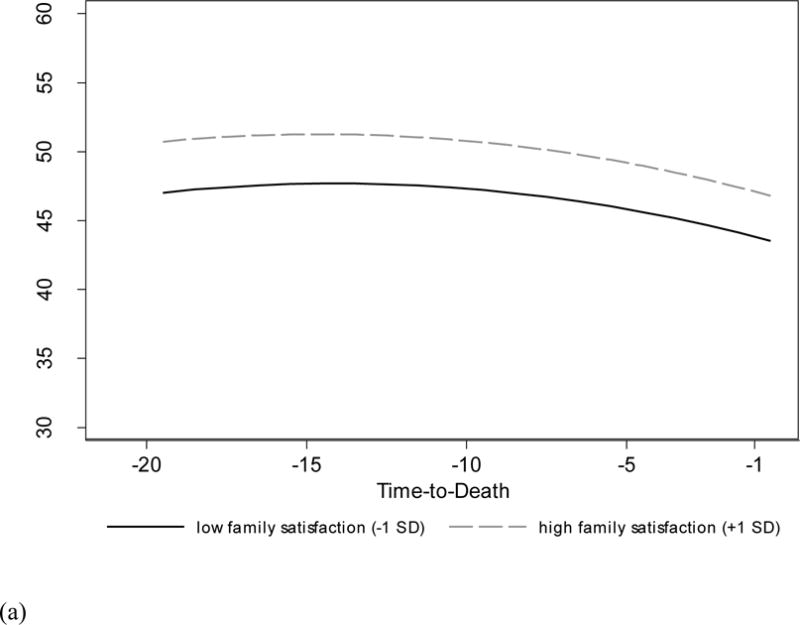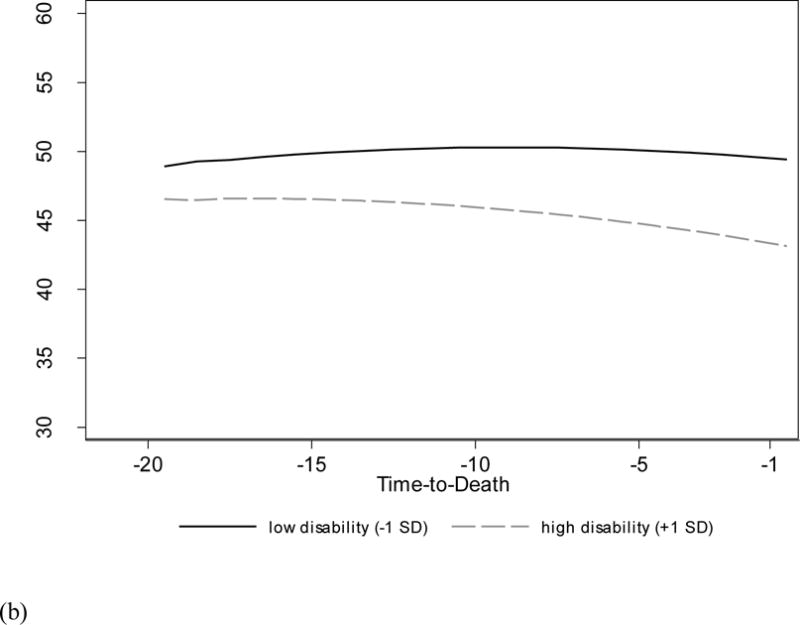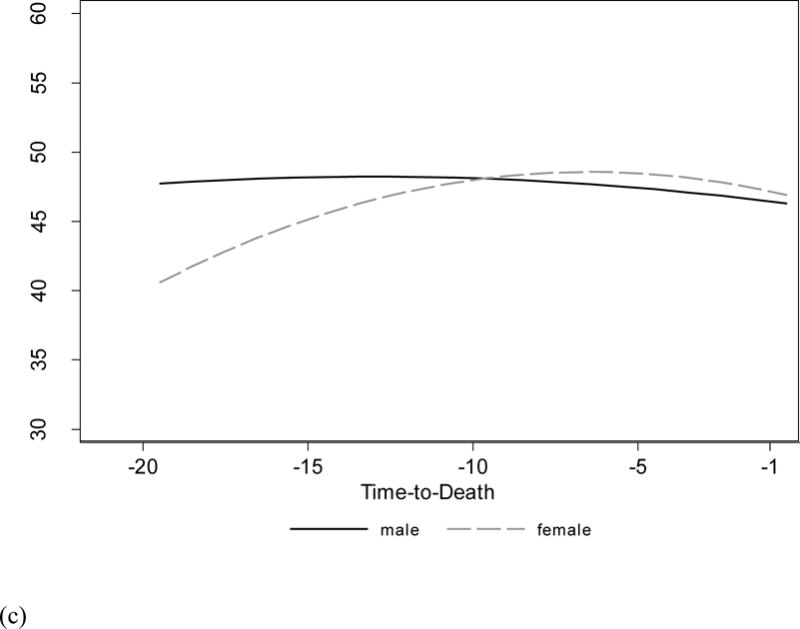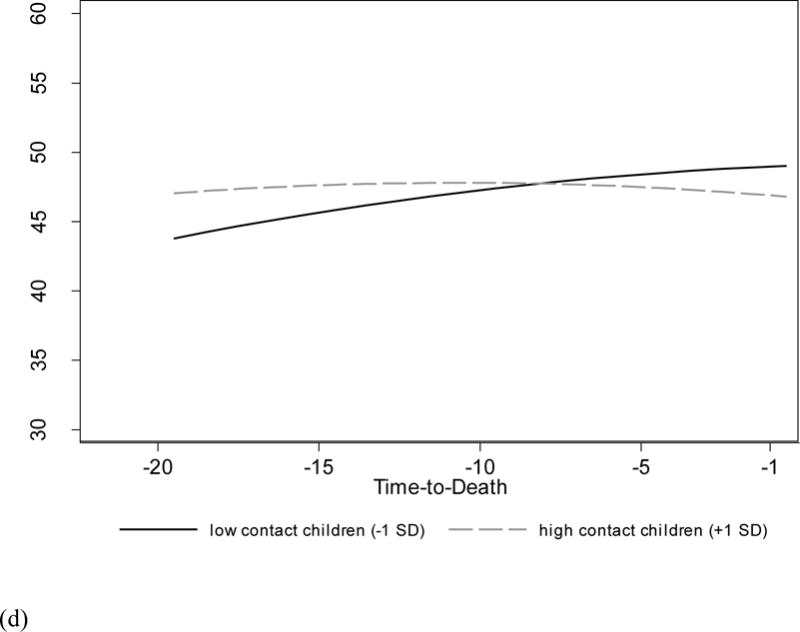Figure 2.




Predicted trajectories of affect balance over time-to-death for hypothetical individuals (a) scoring high (+1 SD) or low (−1 SD) on satisfaction with family, (b) scoring high (+1 SD) or low (−1 SD) on functional disability, (c) for men and women, and (d) for individuals scoring high and low on contact with children. Satisfaction with family was associated with level, but not rate of change in affect balance. Participants with more disabilities had lower affect balance, and showed steeper rates of decline in affect balance over time-to-death. Men showed relatively stable affect balance on average, whereas women showed a pattern of curvilinear change. Having less frequent contact with children was associated with a marginally steeper increase in affect balance over time-to-death.
